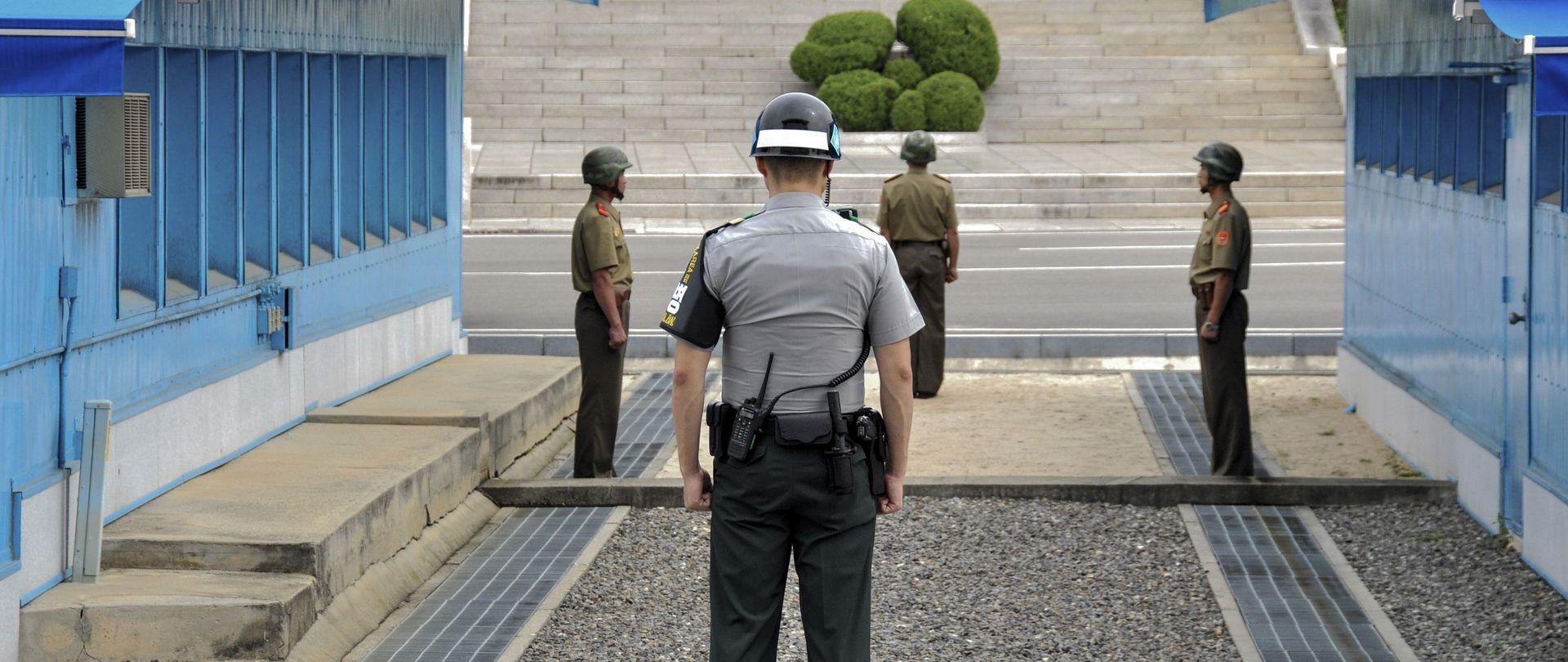
A South Korean soldier and three North Korean soldiers guard their border
© picture alliance/dpa/dpa-Zentralbild | Stephan Schulz

A South Korean soldier and three North Korean soldiers guard their border
© picture alliance/dpa/dpa-Zentralbild | Stephan Schulz
The Korean peninsula was part of the Japanese colonial empire from 1910 until the end of the Second World War. Following the surrender of Japan, Korea was divided along the 38th parallel, the North being occupied by the Soviet Union and the South by the United States. What was supposed to be a transitional solution led in 1948 to the foundation of two states with opposing political systems: the Democratic People’s Republic of Korea (North Korea) and the Republic of Korea (South Korea). Ever since, there has been a border of about 250 kilometres long and four kilometres wide, the so-called demilitarised zone (DMZ). Despite its name, this is one of the most militarised zones in the world. Violent clashes often occur along this border zone as well as along the disputed maritime border line.
Both Korean states joined the United Nations in 1991, but they do not recognise each other and remain formally at war. The Korean War began with North Korea’s attack on the South in 1950. It became the first active Cold War conflict. The 1953 ceasefire between the United Nations (represented by the United States), China and North Korea ended the war. South Korea has not signed the ceasefire agreement.
Ethnic cohesiveness, the goal of reunification and South Korea’s security alliance with the USA are key issues dominating inter-Korean relations. These issues influence the Koreas’ readiness for exchange and cooperation as well as their mutual perceptions as security threats.
Implications of the changing status quo on the Korean Peninsula
doi:10.18449/2022C63
Contribution to a Research Paper 2022/RP 09, 09.09.2022, 91 Pages, pp. 50–55
Contribution to a Research Paper 2018/RP 12, 14.12.2018, 85 Pages, pp. 7–10
Contribution to a Research Paper 2018/RP 12, 14.12.2018, 85 Pages, pp. 11–16
Contribution to a Research Paper 2018/RP 05, 03.09.2018, 46 Pages, pp. 31–35